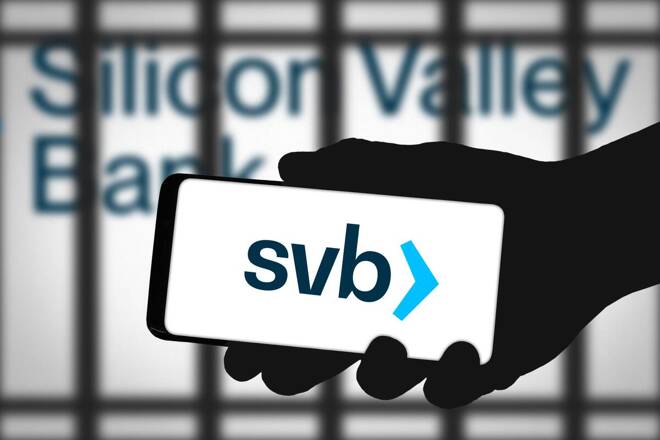Advertisement
Advertisement
US Small Banks Face Funding Challenges Amidst Market Stabilization
By:
Community banks play an integral role in funding a small businesses and agricultural loans.
Key Takeaways
- Fed, Treasury, and FDIC actions have stabilized markets.
- Small banks rely on deposits for consumer loans.
- Problems on Main Street may occur if deposits don’t return.
- Recession odds have increased.
After 3 massively stormy air pocket-filled sessions, the last 24 hours have seen market volatility ebb and sentiment stabilize for the first time since the SVB crisis.
Either folk have run out of ink to keep the echo chamber supplied, it’s a pause in the action, or the market is coming to terms with that in the bigger picture; two probably avoidable bank runs are micro in nature.
So a nervous calm has returned to the market. We are still far from signaling the all-green and returning to the pre-SVB market form. Still, with worries about bank contagion starting to retrocede, we’re finally seeing hints of optimism return to financial markets again.
Small Banks Face Funding Challenges Amidst Deposit Flight
While the actions taken by the Fed, Treasury, and FDIC have helped to stabilize financial markets and are likely to slow deposit outflows from small local banks, it has not stopped folks from shifting funds into the houses that Dimon and Moynihan built.
Unfortunately, small banks rely on deposits to fund consumer loans. Hence investors remain jittery over deposit flight that could lead to an upward drift in the regional bank-based cost of financing and an extra layer of tightening hitting the real economy. How large this remains to be seen, and without taking an actual view of an imminent US recession, we need to keep our eye on the funding ball. But recession odds have increased.
And while we tend to focus on big Wall Street Big Trading and M & A Banks, small banks typically lend a more significant proportion of their assets to the real economy than large banks. Community banks are integral to Main Street; they reinvest local dollars into the community.
They are generating roughly 60% of all small business loans and making more than 80% of agricultural loans. So there could still be problems on Main Street lurking beneath the surface, especially if deposits don’t return as the bigger get stronger and the weaker, well fall by the wayside.
GOLD
Gold is falling as the run on banks risk has ebbed; hence that bank run “risk premium” has been slashed as the market returns to some semblance of normal functioning, and as rates start to focus on inflation, the return of the hawkish Fed will start to nudge back into the market purview even more so if the next set of US economic data runs hot.
OIL
Oil continues to struggle, but with China’s broad-based recovery underway, although not of the slingshot variety, it should be enough for the bulls to graze on unless Pandora’s box stays open and traders reengage rates-sensitive parts of the economy and take a run at economy driven industries.
One way or another, global consumer confidence will take a significant hit, which usually squashes any upcoming travel plans involving planes, trains, and automobiles. That thought could squash any rally starter, especially if inventories remain flush.
And to clarify an early point about the yield curve steeping fast and “painting the landing strip read,” Indeed, the far more immediate and present recession danger occurs when a rapid steepening occurs after inversion( like yesterday). That event usually informs investors it could be time to flee for the hills.
About the Author
Stephen Innescontributor
With more than 25 years of experience, Stephen Innes has a deep-seated knowledge of G10 and Asian currency markets as well as precious metal and oil markets.
Advertisement
